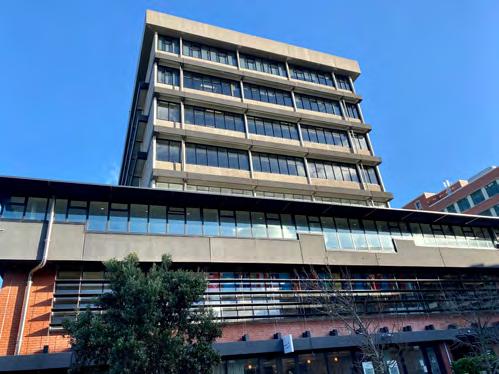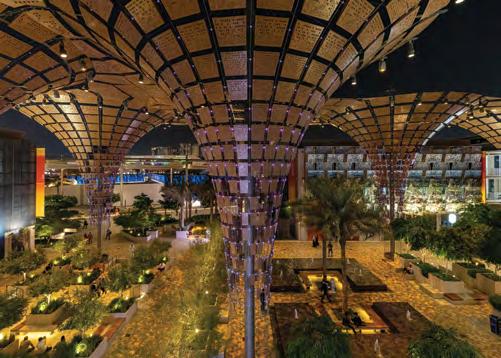
2 minute read
STRUCTURAL AWARDS 2022
library, which was a serious consideration.
Judges’ comments
Great pains have been taken to restore this library following earthquake damage and the efforts to justify the building through repairs and upgrade are admirable, providing enormous savings on the alternative of new construction. The design implemented improvements beyond code requirements under severe working constraints as the library remained in use throughout. There was impressive communication of the engineer’s role in the process at a digestible level for everyone involved to understand. This communication of the complex works to building users throughout the project stands out as a good example of the importance of our profession: teamwork, communication, collaboration and responsiveness.
Award for innovative form-finding and detailing in response to complex environmental conditions
Winner: Expo 2020 Dubai Sunshades
Location: Dubai, United Arab Emirates
Structural Designer: Webb Yates
Engineers
Client: Bureau Expo Dubai 2020 c/o Hopkins Architects
Key Attributes: Process
Project description
Award for a technically impressive and well communicated response to save a public building after earthquake damage
Winner: Rankine Brown Library
Location: Wellington, New Zealand
Structural Designer: Beca
Client: Te Herenga Waka-Victoria
University of Wellington

Key Attributes: People, Profession
Project description
A sensitive seismic repair project to the inside of a working library following significant damage in the 2016 Kaikōura earthquake. Base isolating an occupied building’s lift shafts was an unusual challenge and potentially a world first. It required creative thinking to overcome the constraints of a short time-frame and incredibly tight site within the building. There was also a significant carbon dividend, as restoring full use of the lifts was far more sustainable than demolishing and building a replacement
A series of over 50 shading structures which line the main streets of the Dubai Expo and are multifunctional in providing shade during the day and light at night. The structures are formed by suspending a thin steel cable-net from a steel mast and pulling it tight to the base. From this net, thin perforated aluminium panels are hung, carefully balanced to follow the shape of the net. These panels are free to pivot around the cable they are hung from, in the wind, shedding wind and creating a beautifully active rippling sculpture.
Judges’ comments
These simple and elegant structures served many aesthetic and practical functions and are beautifully detailed.
The rigorous testing, analysis and design of the aerodynamics of the swinging panels required high levels of analysis and wind-tunnel testing to investigate and understand wind effects. These complex dynamic issues were successfully dealt with, offering benefit of dynamic analysis for future projects.
Award for research informed innovation of novel highperformance materials
Winner: Stadtbahnbrücke
Location: Stuttgart, Germany
Structural Designer: Schlaich Bergermann Partner

Client: SSB Stuttgarter Straßenbahnen AG
Key Attributes: Process
Project description
A network arch bridge with hangers made entirely of carbon fibre (CFPC). The integral design and the use of a high-performance material for the hangers in the case of the light rail bridge allow for a low material input and high transparency. The bridge consists of a central main span and two approach spans. The main span is connected by an 80 m network arch and two protruding truss frames, which continue the swing of the slender arches – not only as sloped concrete supports but also as a visual element.

Judges’ comments
A worthy demonstration of new materials and new applications. The resulting design embodies a combination of well-known techniques and new cutting-edge technology to provide a graceful, highly efficient take on the classic cable-hanger arched bridge.
The development of the bonded carbon-fibre composite members was the result of material science research and a very rigorous testing regime, involving over a million stress-test cycles, to demonstrate the suitability of this hybrid material for use in these circumstances.










